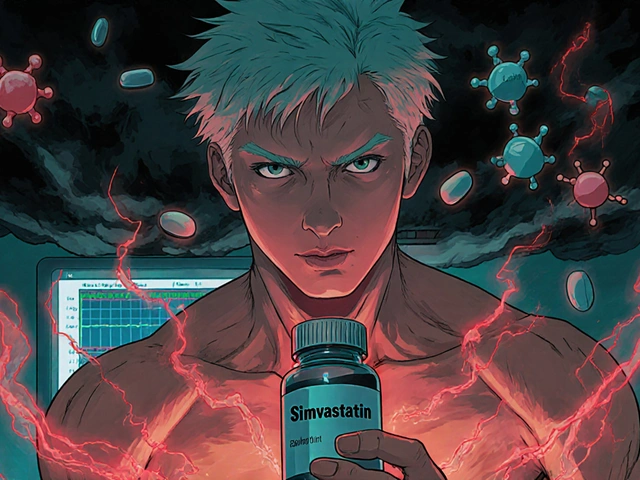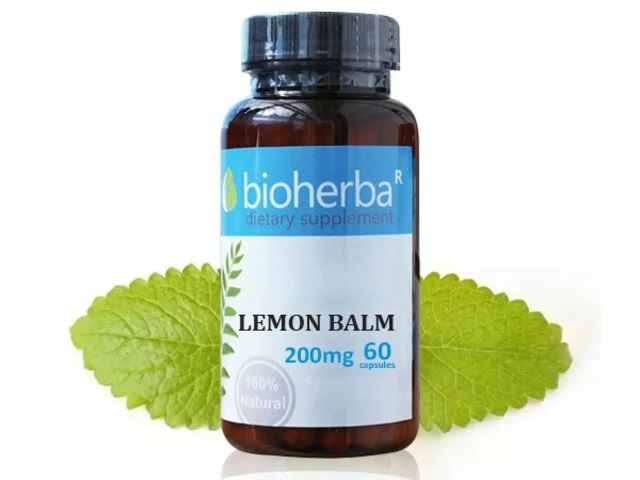
Statin Interaction Risk Checker
Calculate Your Statin Safety Risk
This tool helps you understand the risk of myopathy when taking statins with other medications. Enter your current statin and any other medications to see your risk level and get safety recommendations.
Risk Assessment Results
Risk Factors Detected
Important Safety Note
Statins save lives. Millions of people take them every day to lower cholesterol and prevent heart attacks and strokes. But for some, the cost is muscle pain - sometimes severe enough to stop the medication altogether. The real danger isn’t just the statin itself. It’s what happens when it mixes with other drugs. That’s where the risk of myopathy spikes - and it’s something you can’t afford to ignore.
What Exactly Is Statin-Induced Myopathy?
Myopathy means muscle damage. In the case of statins, it’s not just soreness after a workout. It’s persistent muscle pain, weakness, or cramps that don’t go away. In rare but serious cases, it can lead to rhabdomyolysis - where muscle fibers break down and leak into the bloodstream, potentially wrecking your kidneys. The good news? Severe cases are rare. Studies show less than 0.1% of people on statins develop rhabdomyolysis. But mild to moderate muscle symptoms? That’s far more common. Up to 30% of people report muscle discomfort on statins. Many quit because of it - even though most could switch to a different statin and feel better. The key is knowing when it’s just a side effect and when it’s a warning sign. Doctors look for two things: muscle symptoms and a creatine kinase (CK) level more than 10 times the normal range. If you have pain and your CK is that high, it’s myopathy. Stop the statin. Get help.Not All Statins Are the Same
Statins aren’t interchangeable. They’re metabolized differently in your body, and that changes your risk. Lipophilic statins - like simvastatin, lovastatin, and atorvastatin - slip easily into muscle tissue. That’s why they’re more likely to cause muscle problems. Simvastatin, especially at 80mg, carries a 0.44% annual risk of myopathy. That’s 20 times higher than low-dose pravastatin. Hydrophilic statins - like pravastatin, rosuvastatin, and fluvastatin - stay mostly in the liver. They don’t enter muscle cells as easily. Pravastatin has the lowest reported muscle symptom rate: just 0.6% to 1.4%. Even rosuvastatin, which has higher muscle symptom rates in some studies, is safer than simvastatin when used at lower doses. Here’s the bottom line: if you’ve had muscle pain on one statin, switching to pravastatin or fluvastatin often fixes it. Many patients who quit statins entirely because of pain can go back on a different one and do fine.Drugs That Turn Statins Into a Hazard
The biggest risk doesn’t come from statins alone. It comes from what you take with them. Macrolide antibiotics like clarithromycin and erythromycin are silent killers in this context. They block the liver enzyme CYP3A4, which breaks down simvastatin and lovastatin. The result? Your blood levels of statin can jump 10-fold. That’s why the NHS recommends stopping simvastatin or lovastatin entirely during a course of these antibiotics. Azithromycin? Safe. It doesn’t interfere. Immunosuppressants like cyclosporine are even more dangerous. They can increase statin levels by 3 to 13 times. If you’re on cyclosporine after a transplant, simvastatin is off-limits. Even atorvastatin needs a drastic dose reduction. Fibrates like gemfibrozil double statin levels in the blood. Fenofibrate? Much safer. That’s why guidelines now say: if you need both a statin and a fibrate, pick fenofibrate. Not gemfibrozil. Calcium channel blockers like diltiazem and verapamil also interfere with statin metabolism. The FDA now limits simvastatin to 20mg max if you’re on these drugs. Higher doses? Risky.
Who’s Most at Risk?
Some people are just more vulnerable. Age is a big one. People over 75 are at higher risk. Small body frame? That matters too. Low body weight means less space for the drug to spread out - so concentrations stay high. Chronic kidney disease? Hypothyroidism? Alcohol abuse? All increase your chances. Even intense exercise can tip the scales. If you’re a runner or cyclist on statins and suddenly feel like your legs are made of lead, that’s not just fatigue. The most dangerous combo? An older person with kidney issues, on simvastatin 80mg, taking clarithromycin for a sinus infection. That’s a perfect storm. And it’s happened - more than once.What to Do If You Have Muscle Pain
Don’t ignore it. Don’t assume it’s just aging. Don’t stop the statin on your own - talk to your doctor. First step: Check your CK levels. If it’s over 10 times normal with symptoms, stop the statin. If it’s 5 times normal without symptoms, pause and retest in a week. Second step: Review every medication. Prescription, over-the-counter, even supplements. Ask: Could this be interacting? Especially antibiotics, antifungals, or heart meds. Third step: Switch statins. Try pravastatin or fluvastatin at a low dose. Many patients find relief here. Studies show 71% of people who stopped statins due to muscle pain can tolerate a different one. Fourth step: Monitor. Get CK checked every 3 to 6 months if you’re on a high-risk combo or have other risk factors.Alternatives When Statins Don’t Work
If you truly can’t tolerate any statin, there are options. Bempedoic acid (Nexletol) works in the liver without touching muscle tissue. It’s effective, and it doesn’t cause myopathy. But it costs over $4,000 a year - compared to $6.60 for generic atorvastatin. Icosapent ethyl (Vascepa) isn’t a statin, but it lowers triglycerides and reduces heart risk in people already on statins. It’s not a replacement, but it helps reduce the need for high-dose statins. Emerging tools include genetic testing. A gene called SLCO1B1 affects how your body handles simvastatin. People with a certain variant have a 4.5-fold higher risk of myopathy. The FDA added this to simvastatin’s label in 2011. But most doctors don’t test for it - yet.What You Can Do Right Now
If you’re on a statin and feel fine? Keep taking it. The heart benefits far outweigh the risks for most people. If you’re on simvastatin or lovastatin and take another drug? Check your list. If you’re on clarithromycin, diltiazem, cyclosporine, or gemfibrozil - talk to your doctor now. Don’t wait for muscle pain. If you have unexplained muscle soreness? Don’t assume it’s just exercise. Get your CK checked. Ask about switching statins. If you’ve quit statins because of pain? You’re not alone. But you might not need to quit forever. A different statin, lower dose, or better timing could bring you back.Final Thought: Don’t Fear Statins - Respect the Interactions
Statins are one of the most effective drugs ever developed. They’ve cut heart attack rates by nearly half in high-risk groups. But they’re not harmless. Their danger lies in the hidden interactions - the ones that fly under the radar because no one thinks to ask. The solution isn’t avoiding statins. It’s knowing which ones to use, which drugs to avoid, and when to act. With the right approach, you get the heart protection - without the muscle damage.Can I take ibuprofen with statins?
Yes, ibuprofen and other common NSAIDs like naproxen don’t interfere with statin metabolism. They don’t increase myopathy risk. But if you’re taking them regularly for pain, make sure the pain isn’t actually statin-related muscle damage. Always check with your doctor before combining medications long-term.
Is red yeast rice safe with statins?
No. Red yeast rice contains monacolin K, which is chemically identical to lovastatin. Taking it with a prescription statin is like doubling your dose. This significantly raises your risk of myopathy and rhabdomyolysis. Avoid combining them entirely.
Does coenzyme Q10 help with statin muscle pain?
Some people report feeling better taking CoQ10 supplements (100-200 mg daily). The theory is that statins lower CoQ10 levels, which may affect muscle energy. But clinical trials haven’t proven it works consistently. It’s low-risk to try, but don’t expect miracles. Switching statins is far more effective.
Can I take statins every other day to avoid side effects?
For some people, intermittent dosing - like rosuvastatin 40mg every other day - works just as well as daily dosing for lowering cholesterol. Early trials show it may reduce muscle symptoms. But this approach isn’t officially approved for all statins and should only be done under medical supervision. Never self-adjust your dose.
Why do some people get muscle pain and others don’t?
It’s a mix of genetics, age, body size, kidney function, and other medications. Some people have a genetic variation (SLCO1B1) that makes them process statins slowly, leading to higher blood levels. Others have smaller muscles or take drugs that block statin breakdown. There’s no single reason - which is why personalized care matters more than one-size-fits-all dosing.
How long does statin muscle pain last after stopping?
Most people notice improvement within 2 to 4 weeks after stopping the statin. Full recovery can take up to 2 months. If pain persists beyond that, it’s likely not caused by the statin. See your doctor to rule out other causes like nerve damage or autoimmune conditions.




